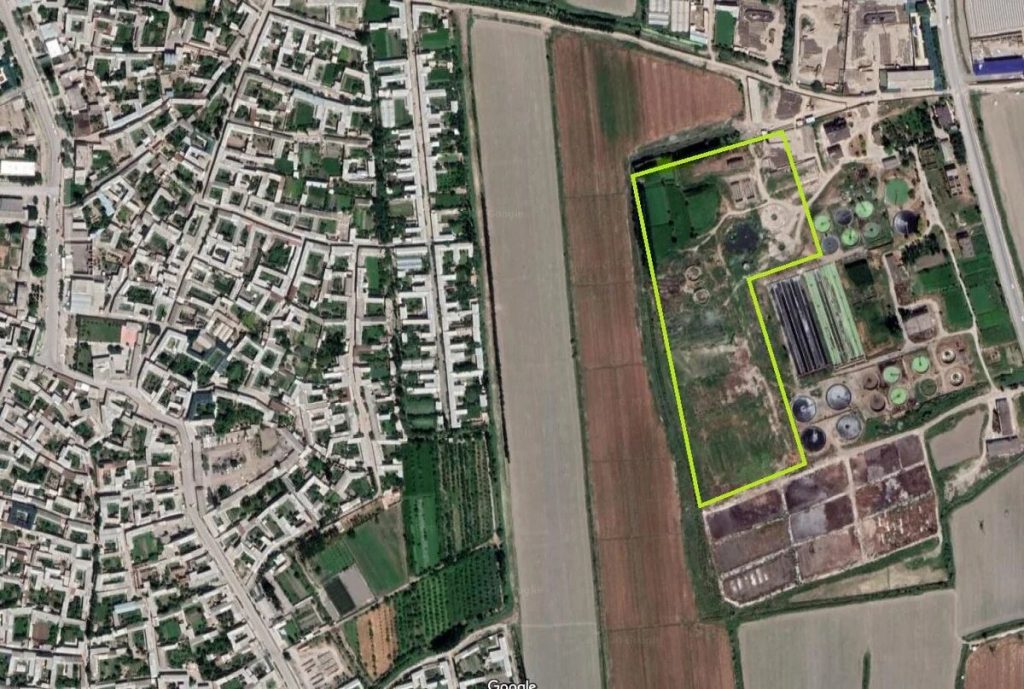
EOC on PPP terms
Construction of new sewage treatment facilities in Namangan
The project is very interesting to me personally, because my first project on the reconstruction of sewage treatment plants was implemented with the European Bank for Reconstruction and Development already 20 years ago.
Today we will describe what the project itself is, and tomorrow I will describe what awaits it…
A request for expression of interest
Let’s start at the beginning:
The Ministry of Housing and Public Utilities has issued a Request for Expression of Interest for a public-private partnership project to design, construct, finance, operate and maintain (DBFOM) sewage treatment plants with a capacity of 75 thousand cubic meters per day (today the treatment plant receives ~57 thousand) and 7.5 km of sewage collector.
Here are excerpts from the request for expression of interest:
The city of Namangan, located 295 km east of Tashkent, and its surrounding areas represent a potential service area of up to 1.8 million people.
The Expressions of Interest (EoI) phase precedes the Request for Qualifications (RFQ) phase, accordingly, documents for the RFQ will only be provided to those companies that register during the Expressions of Interest phase.
This is the first major PPP project in the water supply and sanitation sector initiated by the Ministry of Housing and Communal Services of the Republic of Uzbekistan, Uzsuvtaminoot Joint Stock Company and the Agency for Development of Public Private Partnership under the Ministry of Finance.
The international tender for selection and attraction of a private partner will be held in accordance with the Law of the Republic of Uzbekistan on PPP (this is an important point, because in Uzbekistan there are actually two systems, under which infrastructure projects can be implemented: investment legislation and legislation on PPP)
Consultants
Deal advisor
The Asian Development Bank assists the Government of Uzbekistan in project structuring, preparation of necessary documents and tender procedures
Legal consultants
International consultant Allen & Overy and local consultant Kosta Legal, who will assist in preparation of documents, including a draft PPP agreement, in line with international practice and framework conditions of the Republic of Uzbekistan
Technical Consultant: Ardurra International and Spectrum Group, whose tasks include preparation of preliminary technical-economic parameters and assistance in all technical aspects
A little more about the project
Let’s start with the fact that the project is included in the register of projects to be implemented under the PPP, which in itself is already good: a) the policy of openness is very important for investors and b) it is determined that the project is needed in the country on a strategic level.
Let’s skip the answer to the questions of how much was previously discussed the need for this project, how much the government has ranked all the infrastructure projects and by what criteria, how much PPP meets the requirements for this project. We take it as a given — the project is strategically supported by the leadership of the country and all preliminary economic calculations have been made.
The existing sewage treatment plants were built as far back as 1965, and in 1980 additional connecting sewage collectors were built in 5 districts of Namangan.
An interesting point for potential private partners — the project does not include rehabilitation or demolition of existing treatment facilities — in other words, we build in a clean field. The resettlement of the population is also not required. This is also good — less problems.
Also, the project has the potential to increase — only 27.3% of families in Namangan city are connected to the sewerage network, and in Namangan district just under 2% of the families living there are connected to the sewerage system at all
Primary structure of the project and key parties

Features of the PPP project in Namangan
The project is implemented on Design-Build-Finance-Operate-Maintain (DBFOM) terms, i.e. the private partner has to design, build, operate, maintain and, if necessary, overhaul sewage facilities
At the end of the term (23 years after commissioning the sewage treatment plant), the facility is cleaned up and handed over to the state
The party to the PPP agreement is the Republic of Uzbekistan, represented by the Ministry of Housing and Utilities.
Take-or-pay principle Take-or-Pay
Risks on demand, volume of treated effluents and tariffs are borne by the state partner
The terms of compensation in case of termination of PPP agreement by either party and the terms of indexation of payments to the private partner are laid down in the PPP agreement
The Special Purpose Vehicle established by the winner must be registered in accordance with the Uzbek law
The private partner must finance the project using its own and credit funds
Payment to the private partner for the project consists of two parts:
(i) fixed monthly or quarterly capacity availability payments, which cover investments made, credits and loans, accounting for return on equity (equity capital) and fixed operating costs and
(ii) variable operating payments depending on the volume of wastewater treated
In general, the payment to the private partner will be calculated to cover the costs of construction and operation of the private partner
To be continued…